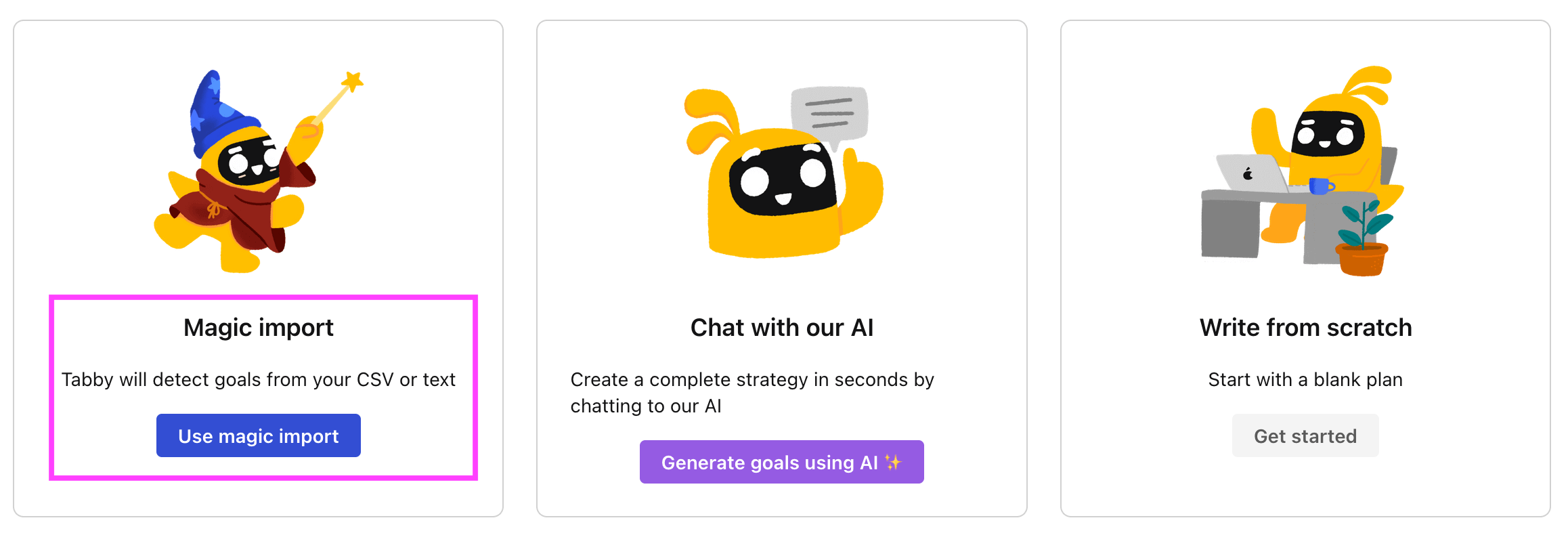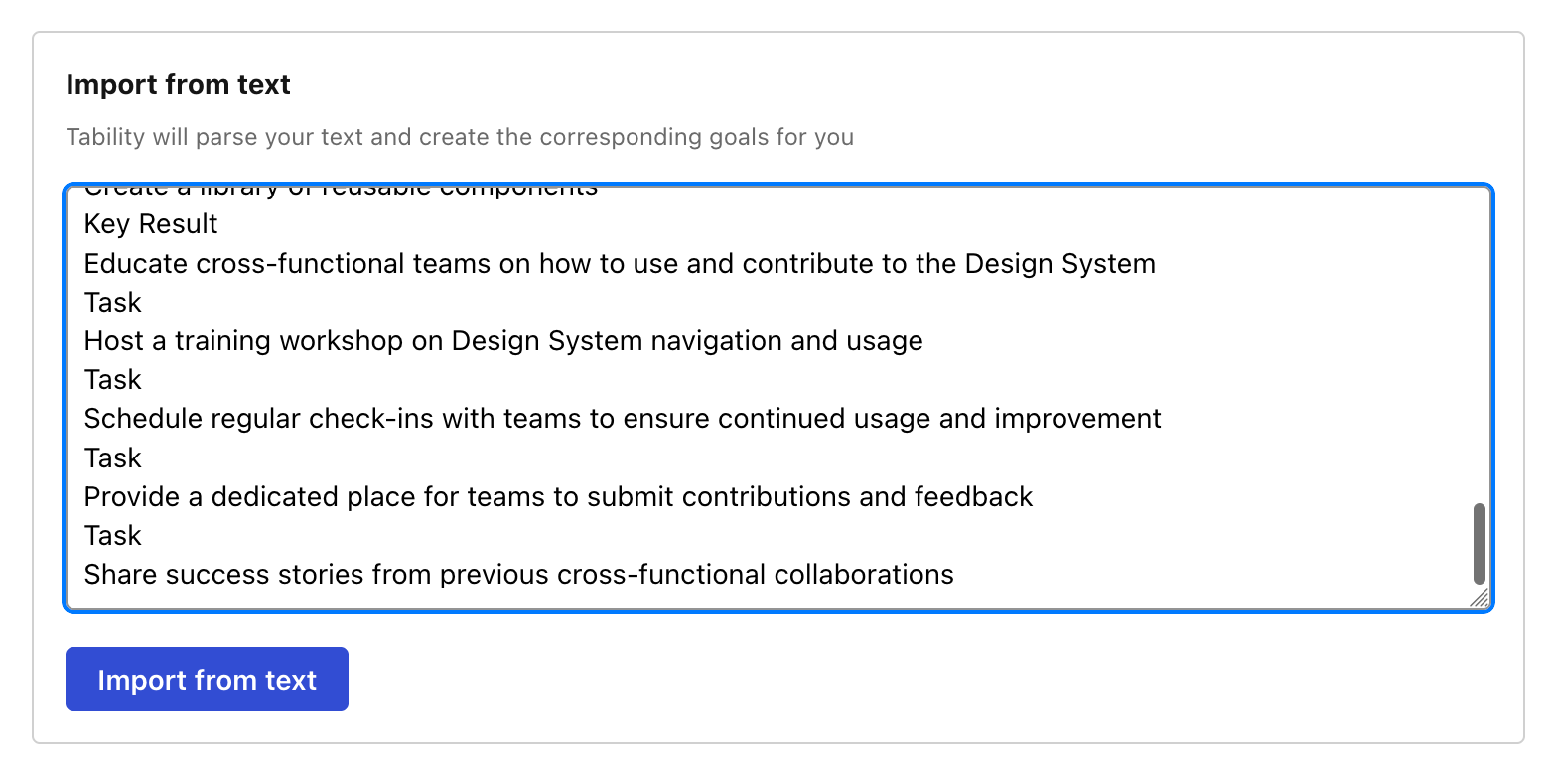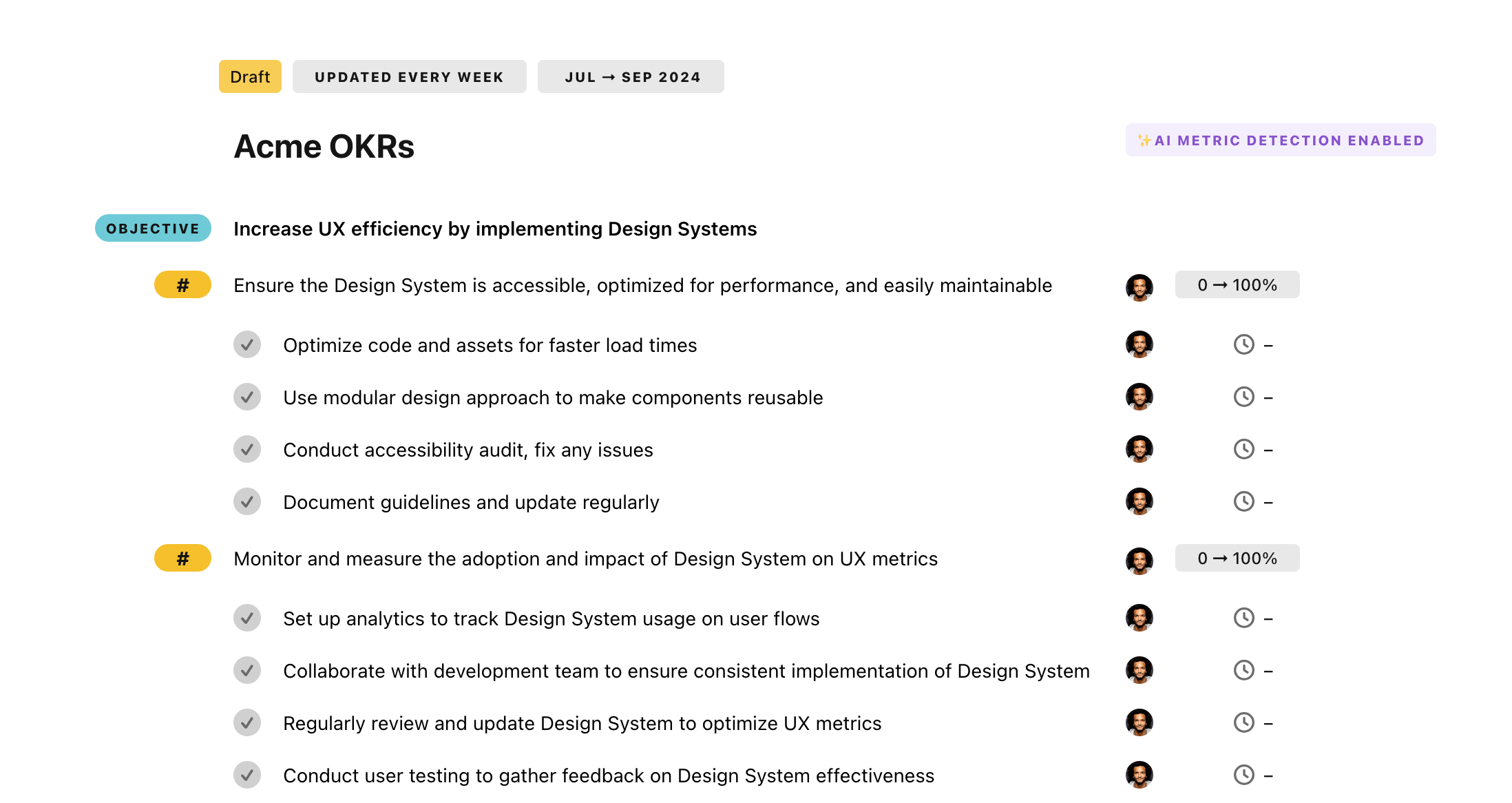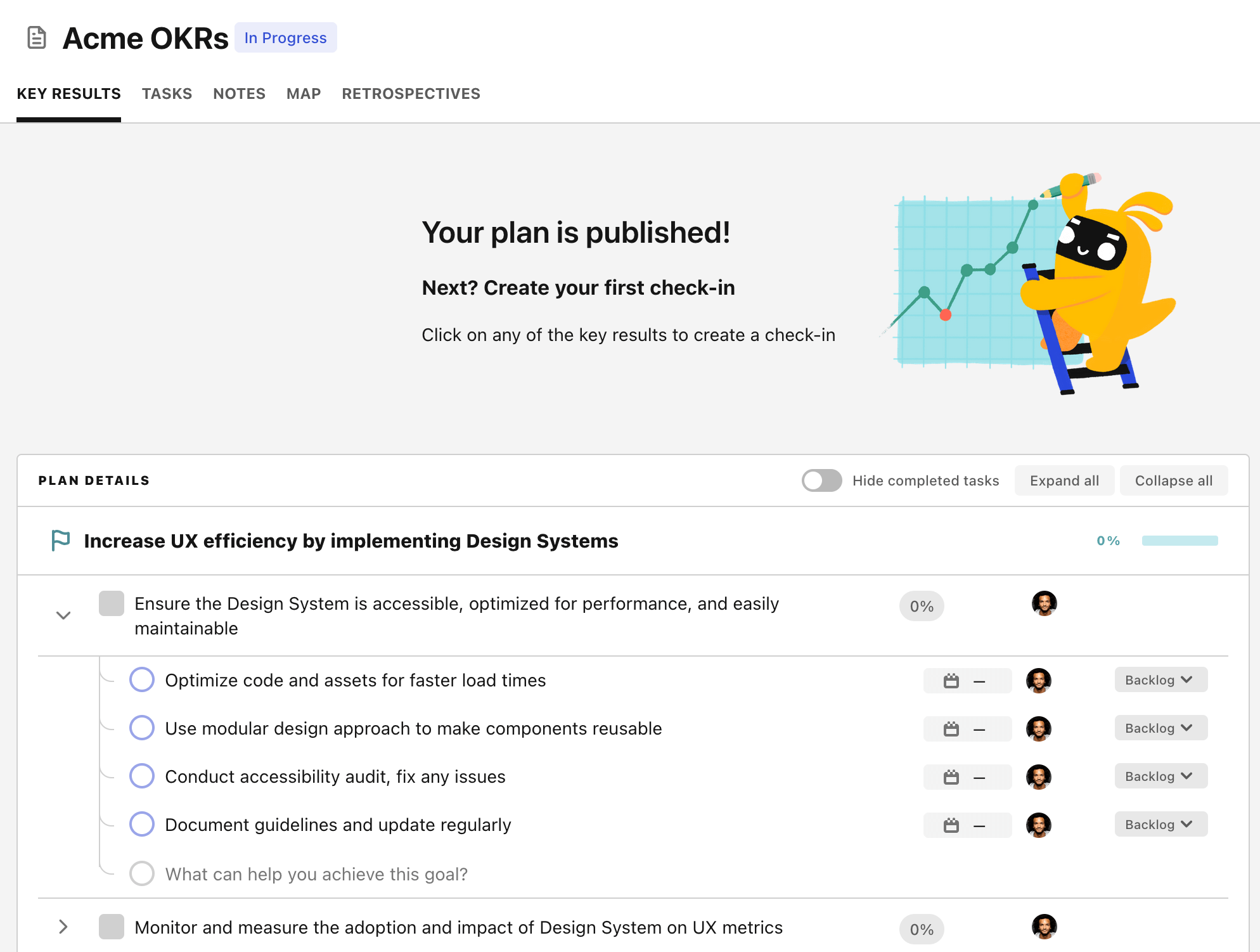OKR template to boost product adoption rates
Your OKR template
The secondary objective is to augment product-demo requests by 25%. This can be achieved by launching a targeted marketing campaign for the product demos, optimizing the website's call-to-action related to demo requests, and training the sales team to better promote demos.
The final outcome is aimed at realizing a 15% growth in weekly active users. The initiatives for this include optimizing application usability through continuous A/B testing, rolling out a referral incentive program, and executing a targeted marketing strategy to enhance product awareness.
Overall, this OKR focuses on using user feedback and marketing tactics to improve product adoption, mainly by enhancing product features, promoting product demos, and growing the user base.
ObjectiveBoost product adoption rates
KRImplement user feedback to enhance product features
Prioritize user suggestions based on resource requirements
Adjust project plans to include new features
Gather and categorize user feedback
KRIncrease demo requests by 25%
Implement a targeted marketing campaign for demos
Optimize website call-to-action for demo requests
Train sales team to better promote demos
KRAchieve 15% growth in weekly active users
Optimize app usability with constant A/B testing
Deploy a referral incentive program
Implement targeted marketing to raise product awareness
How to edit and track OKRs with Tability
You'll probably want to edit the examples in this post, and Tability is the perfect tool for it.
Tability is an AI-powered platform that helps teams set better goals, monitor execution, and get help to achieve their objectives faster.
With Tability you can:
- Use AI to draft a complete set of OKRs in seconds
- Connect your OKRs and team goals to your project
- Automate reporting with integrations and built-in dashboard
Instead of having to copy the content of the OKR examples in a doc or spreadsheet, you can use Tability’s magic importer to start using any of the examples in this page.
The import process can be done in seconds, allowing you to edit OKRs directly in a platform that knows how to manage and track goals.
Step 1. Sign up for a free Tability account
Go tohttps://tability.app/signup and create your account (it's free!)
Step 2. Create a plan
Follow the steps after your onboarding to create your first plan, you should get to a page that looks like the picture below.

Step 3. Use the magic importer
Click on Use magic import to open up the Magic Import modal.
Now, go back to the OKR examples, and click on Copy on the example that you’d like to use.

Paste the content in the text import section. Don’t worry about the formatting, Tability’s AI will be able to parse it!

Now, just click on Import from text and let the magic happen.

Once your example is in the plan editor, you will be able to:
- Edit the objectives, key results, and tasks
- Click on the target 0 → 100% to set better target
- Use the tips and the AI to refine your goals
Step 4. Publish your plan
Once you’re done editing, you can publish your plan to switch to the goal-tracking mode.

From there you will have access to all the features that will help you and your team save hours with OKR reporting.
- 10+ built-in dashboards to visualise progress on your goals
- Weekly reminders, data connectors, and smart notifications
- 9 views to map OKRs to strategic projects
- Strategy map to align teams at scale